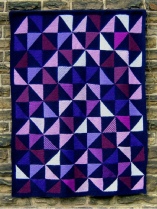

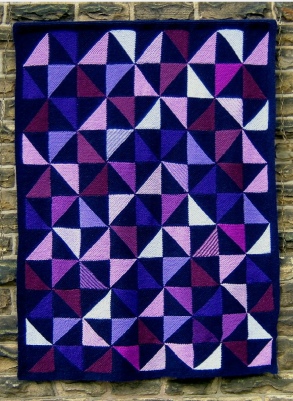
Half-
All of the designs on this page use the simplest patterned square. The squares are knitted diagonally with half in each colour. They can be arranged in many different ways.
This idea has been used as the basis for a great deal of our work with others. It became the basis of the Mathghan project for schools where we work in conjunction with the British Handknitting Association. It has also been used with many craft groups, including the Women's Institute who incorporated it into their Science Education programme.
Windmills
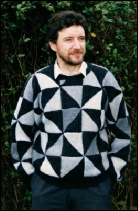
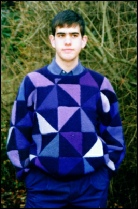
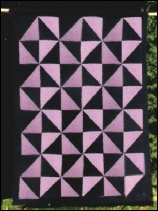
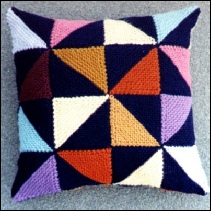
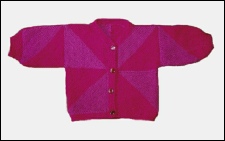
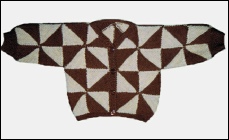
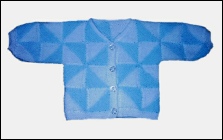
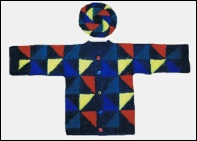

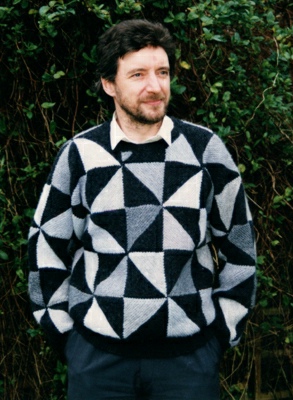
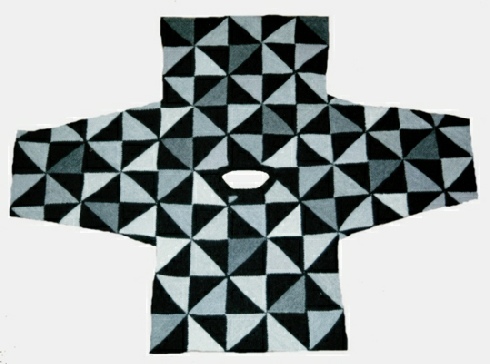
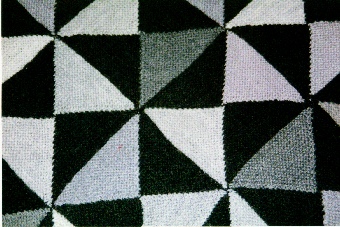
Windmill designs are ideal for using up oddments of yarn. Keep one half of the square consistent and the design will always look planned.
Shades of one colour work well.

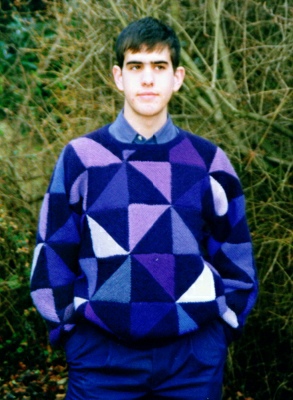

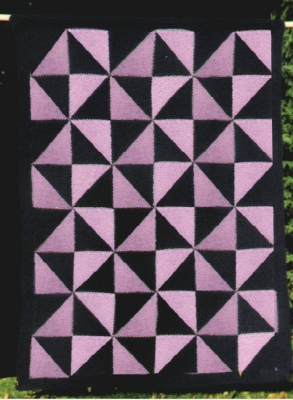
Afghan -
Is this a pattern?
The simple question provokes many arguments. The answer depends on whether you consider the colours to be important or whether you only look at the shapes.
What do you see? Can you see windmills? Which way are they turning? The longer you look, the more you will see.
Sometimes the simplest ideas are the most effective.
Afghan -
This is the only photograph we have that has been 'doctored'.
This afghan does not exist in reality. The Tilting at Windmills photo has been adapted into something that everyone readily accepts as a pattern.
Do you see the same shapes you saw before? More? Fewer?
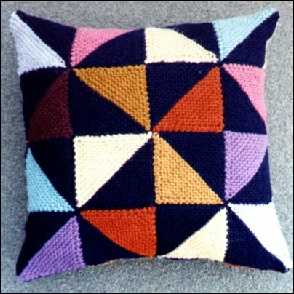
Make one half of each square in the same colour throughout. It is often best to use a strong dark colour. White and neutrals also work well but get dirty quickly.
The design will look planned with any mix of colours for the other halves but will be most effective if there is something to link the colours. They could all be shades of one colour, all bright, all pastel, etc. One of the sweaters above used a range of greys, the other a spread of purples and mauves. The cushion opposite used colours of a similar intensity.
To check whether you will like the effect, put your chosen colours together then look at them through half-
You could choose to make your design more structured using a more limited range of colours. Four colours were used for a child's mohair coat shown above.
Cushion -


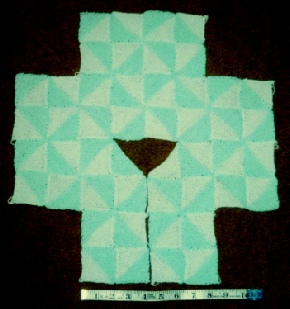
This baby cardigan was made in 3 ply yarn with small squares to give a total width of 9"
The neck shaping is very simple as just half a square is missing on each side.
Garter stitch shapes are ideal for baby garments as they can be stitched edge-
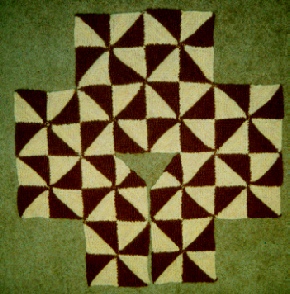
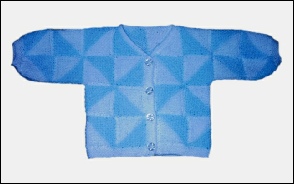
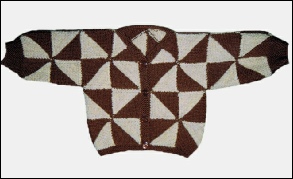
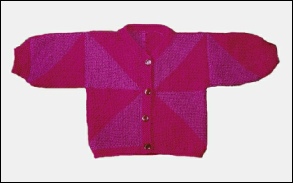
The pink cardigan has larger squares with the neck shaping parallel to the diagonals of the squares
The brown baby cardigan is very similar to the green and white cardigan above. The overall size is the same but the yarn is thicker.
The shape of the neck is the same but, because the squares are positioned differently, the shaping cuts both triangles on both sides.


Other half-

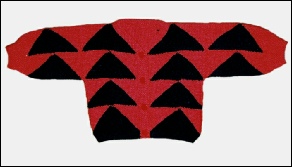
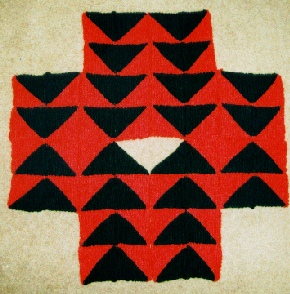
Another arrangement of half-
The neck shaping is formed by omitting the second half of two squares

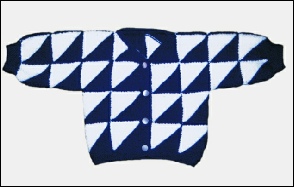
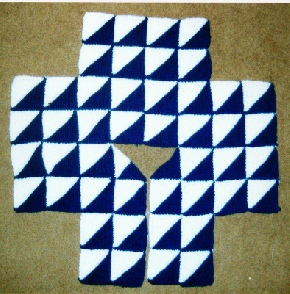
When this cardigan is assembled navy triangles meet at one side and cream triangles meet at the other side

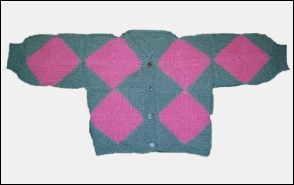
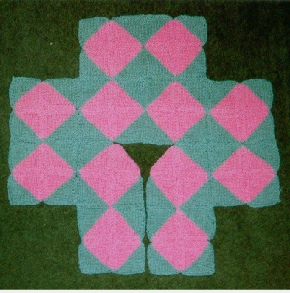
These are also half-
The squares have been stitched together a little too tightly, causing slight bumps in the seams.

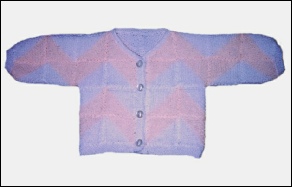
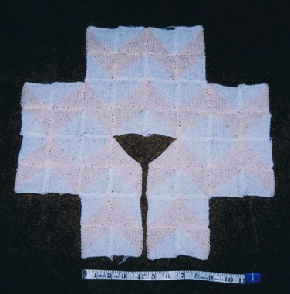
Another half-

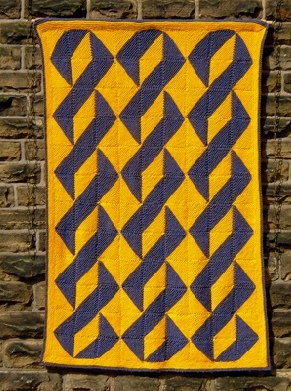
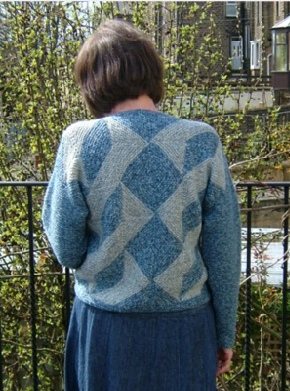
The same arrangement used for completely different items.
See Woolly Thoughts Pages 84 -
